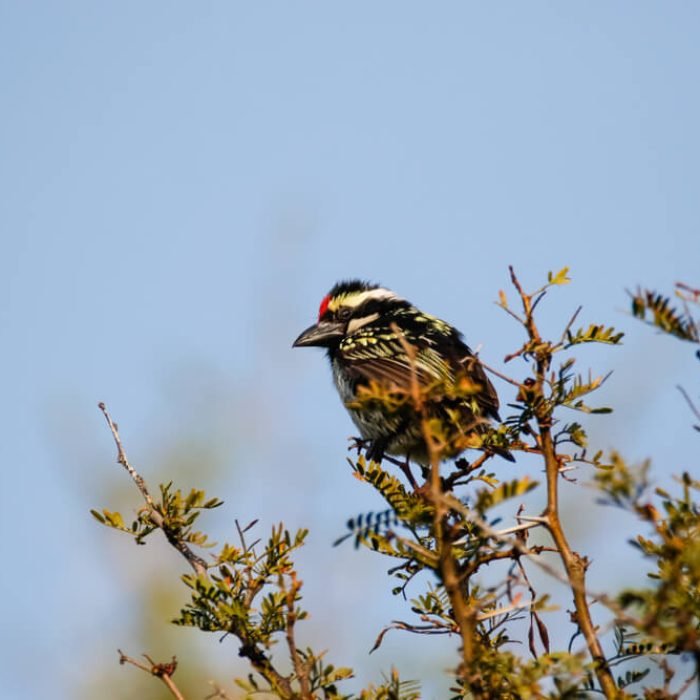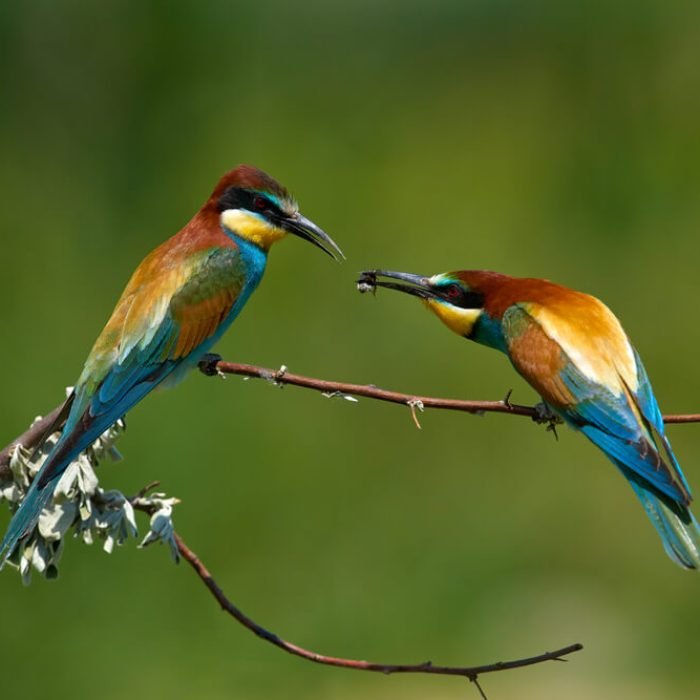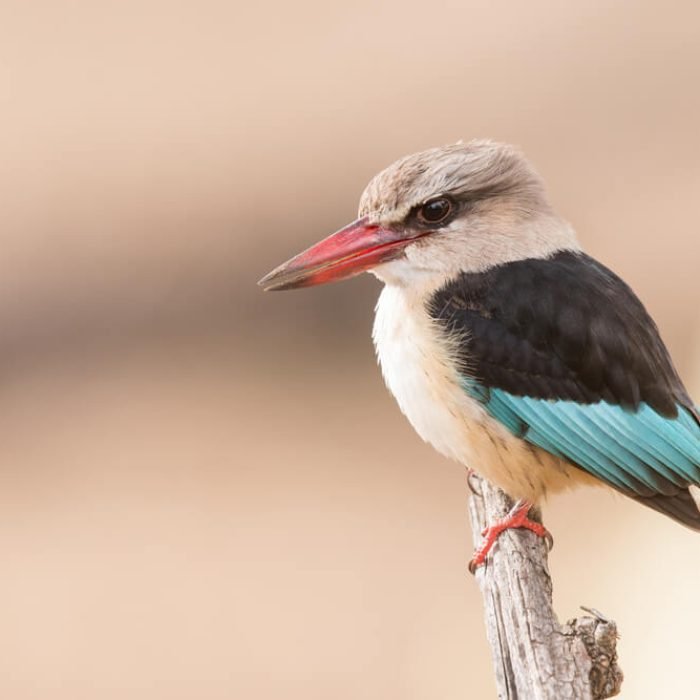Pel’s fishing owl
- Scotopelia peli
- IUCN Status: Least Concern
- Trend: decreasing

General Information
Pel’s fishing owl is a large species of owl in the family Strigidae, found in Africa. It lives near rivers and lakes, and feeds nocturnally on fish and frogs snatched from the surface of lakes and rivers. The species prefers slow-moving rivers with large, overhanging trees to roost in and forage from. It nests in hollows and the forks of large trees. Though as many as two eggs are laid, often only one chick is raised.
Description
Among the world’s owls, the Pel’s fishing owl stands out as both impressive in size and remarkable in its aquatic adaptations. Ranking as the fifth-heaviest owl species and fourth in average wingspan, this striking bird has evolved numerous specialized features for its fish-hunting lifestyle. Unlike most owls, it sports bare, straw-colored legs and toes covered in spiky scales – perfect for grasping slippery prey while minimizing waterlogged feathers. Its loose, shaggy head feathers create a distinctive silhouette, while the nearly invisible ear tufts give it an unusually rounded appearance compared to other large owl’s beautiful plumage displays rich rufous tones with dark barring across its body, though females tend to be slightly less vibrant. Individual birds show surprising variation, with some sporting extensive pale feathers while others exhibit darker markings. Juveniles wear a more uniform buff coloration until maturing into their adult finery. Notably absent are the sound-dampening feather edges typical of most owls, since stealth in flight matters less for this visual hunter that plucks fish from the water’s surface.
The species fills the African night with its haunting calls. Males produce a deep, horn-like “boom” followed by higher-pitched “huhuhu” notes that can carry up to 3 kilometers across the waterways, often inflating their throat dramatically during these performances. Females answer with a distinctive double-note “hoot-oot,” while hungry youngsters beg with shrill “wheeoouu” cries. These vocalizations, combined with the owl’s striking appearance and specialized fishing adaptations, make it one of Africa’s most extraordinary avian predators – a true master of its riverine domain.
Fun Facts
Zambia hosts more Pel’s fishing owls than most countries—especially along the Zambezi and Kafue Rivers.
They are one of Africa’s rarest and largest Owl species.
Ecology and Behaviour
In general, this species is nocturnal and is most vocally active on moonlit nights, especially near dawn. However, they are sometimes seen to be active during the day, especially when prey is scarce. During the daytime, they usually roost on a large tree branch. Often, the male and female roost together. At dusk, they leave the roost and instead perch on stumps, branches, and other objects that extend over the water.
Diet
Primarily fish-eaters, Pel’s fishing owls target prey weighing 100–200 g, though they occasionally take fish up to 2 kg. They hunt opportunistically, catching any suitably sized fish near the water’s surface. Unlike Bubo fish owls, they rarely stray from piscivory but may supplement their diet with frogs, crabs, mussels, insects, and even juvenile Nile crocodiles.
These owls hunt from perches, detecting prey by water ripples before striking with their powerful talons. They rarely submerge, plucking fish while avoiding excessive contact with water. Occasionally, they wade into shallow sandbanks to forage.
Reproduction
These monogamous owls nest in dry season when receding waters concentrate fish. They fiercely defend riverine territories, with densities reaching 23 pairs per 60km in Botswana. Nesting occurs in large tree cavities near water, where females lay 1-2 eggs (62.5×52.1mm, ~85g) timed to hatch as waters recede.
The female incubates for 32 days while the male provides food. Hatchlings (60-70g) grow rapidly, reaching 1.4-1.7kg by fledging (68-70 days). Sibling rivalry often leaves one surviving chick. Juveniles remain dependent for 6-9 months, delaying breeding to alternate years.
Parents employ dramatic defenses against threats:
• Distraction displays (feigning injury)
• Screeching attacks
• Confronting African fish eagles
• Rare clashes with Verreaux’s eagle-owls
Habitat preferences minimize competition with other large owls. The species’ survival strategy depends on:
-
Precise breeding-water level synchronization
-
Extended parental care
-
High territorial fidelity
-
Specialized aquatic hunting
This reproductive pattern, combined with strict habitat requirements, makes them vulnerable to river ecosystem changes. Their two-year breeding cycle further limits population recovery from disturbances
Conservation
It is listed by the International Union for Conservation of Nature (IUCN) as, “Least concern “.
Distribution and Habitat
Pel’s fishing owls can be found scarcely throughout sub-saharan Africa, with the largest concentration found in Zambia. They are also patchily distributed in other countries such as in Nigeria, Senegal, the Gambia, Guinea, Sierra Leone, and in central Africa from the coast to eastern DRC and discontinuously to South Sudan, Somalia, Kenya, and Tanzania, Zimbabwe, Botswana, and eastern South Africa.
Interaction with Humans
Due to the dependence on large waterways with abundant fish and mature trees, they are a highly sensitive to destruction of their habitat. Damming rivers, siltification, and removal of water for irrigation may be local issues faced by the species. In some places, water pollution may pose a further problem, and overfishing, particularly where human populations are rapidly increasing, can also deplete the owl’s food supplies. Changes in water supply can have knock-on effects on the riverine forest in which Pel’s fishing owls roost and nest, and in some areas this habitat is being further degraded by wood-cutting and even by tree damage by large elephant populations. Even where the species occurs in protected areas, human activities upstream can still impact fish stocks and nesting trees.
References
Share:
- Kingdom: Animalia
- Phylum: Chordata
- Class: Aves
- Order: Strigiformes
- Family: Strigidae
- Genus: Scotopelia
- Wingspan: up to 153 cm
- Weight: 2.35 Kg












